Research report 6 March 2020
Crew 223
Submitted by Crew Scientist Marion Lebrun
1. LOAC and Weather Station:
Nothing to report. Everything is working as it should. We hope the
instruments resist the heavy wind of today.
2. MegaARES:
Nothing to report. Everything is working as it should. We are waiting a
bit longer to collect another round of data.
3. Solar oven:
The oven was taken outside for the first time this morning during the
EVA. It managed to heat 600mL of water from 10°C to 67°C in a bit less
than two hours. Florian is very satisfied with this first round of data.
He now plans to repeat the experiment with the same amount of water but
with a different orientation towards the Sun to compare the yield of the
solar oven.
4. BackPack and LCVG:
Nothing to report.
5. Foreign languages (Human Factors):
Communication within the teams is well established and much more
efficient than on the first session. There are almost no mistakes on the
parts chosen to build the given models which shows how communication has
improved. I have noticed a lot less silents during the 10min of LEGO
building. Crew members ask for a lot more precision and details:
sometimes it might slow down the construction but it certainly avoids
misinterpretations. I am overall very satisfied with the way the
experiment is going.
6. Group collaboration (Human Factors):
Nothing to report.
7. Crew members’ individual planning display:
A first draft has been successfully tested although emails and Internet
data are still missing (but the current sol schedule with the sport
schedule is there). Blandine and I have decided to give up on the email
window being refreshed every hour; we are thus going to create a
hyperlink to the Mission Support email page that would be a shorter path
than having a crew member open his/her computer to check it. The same
thing will be done for the available Internet data.
8. Relaxation and positive psychology (Human Factor):
Nothing to report. Everything works well.
9. Music for plants (GreenHab):
Yesterday was the first session of the experiment: the radish plants
are stimulated by UV light and music (sequence of notes that favors the
synthesis of a protein making the plant UV resistant) for 7 minutes
every day.
10. Spirulina growth (GreenHab):
Nothing to report. Everything is working as it should, nothing new. It
is too early analyse the impact of the type of fertilizer on the
spirulina growth.
11. Aerospring (GreenHab):
We have increased the watering (20 to 25 minutes twice a day instead of
15 minutes twice a day) due to the very dry atmosphere. Hopefully it
will increase the lettuce growth.
12. Water consumption monitoring:
Nothing to report.
13. Soundless EVA:
We want to test a protocol for a soundless EVA. Our aim is to avoid any
verbal communication between the Habcom and the EVA team, and also
within the EVA team. Of course each of us will have a working radio in
case of a problem or emergency. Here is the detailed protocol :
– we stop communications as soon as we enter in the airlock.
– we use a white board and a marker to write down all the requested
numbers : rovers’ hours, levels of charge, static tank level and time.
If needed, this board might also be used to communicate between us.
– when the airlock light is switched off by the Habcom, it means that
the depressurization is finished and that we are allowed to go outside.
– once outside, each of us will have a specific role. Three will do the
usual checks while one (the communicator) will hold the board and meet
the others to allow them to write down their data. Then the communicator
will communicate those data (using signs and gestures we have chosen) to
the Habcom, who will be looking at him through the upper-deck window.
– then the EVA team will wait for a signal from the Habcom (still
through the window) giving them the authorization to leave the Hab zone.
– in each buddy team, one will guide the pilot for the U turn.
– before the EVA, we will decide which rover will be first to leave.
– during the rover ride, the first rover needs to know if the 2nd rover
is following. Thus we have imagine a specific protocol. Every 1 min
(signal will be given by the copilot who will have a watch), the first
rover will stop on the right side of the road. The 2nd rover will slowly
pass the first one by the left. Then the stopped rover will move and
follow the new first one. And so one. Of course we will drive slowly,
especially during passing.
– when we arrive at our target destination, the first rover stops in the
middle of the road for about 20sec (to allow the 2nd one to stop
behind). Then the 1st rover will move and park on the left side of the
road (not right side to avoid any misunderstanding with the stop on the
right, that is dedicated to let the 2nd rover pass). The communicator
will come to the 2 pilots with the board to let them right down the
level of charge of the rovers.
– when we leave our target destination, after the U turn, the 1st rover
stops on the right of the road and the 2nd rover passes the 1st one by
the left.
– during the exploration, we will use most of the gestures we already
use to communicate during our EVAs. We will of course stick together,
the first walker will often turn around to check that everybody is still
there and fine. Every 10min, the leader will ask, using a gesture, how
the team feels (regarding their suits and their fatigue). Each member
(including the leader) must answer on a scale from 1 to 5. If 1,
everything is fine; if 4, we go back home; if 5, we use the radio and go
back home. Of course, once again, each team member is free to use its
radio if he/she feels he/she needs to.
– when we arrive in the Hab zone, the challenge is to get the approval
from the Habcom that allows us to park near the Hab. The EVA team will
stop near the Science Dome to wait for the approval. During the last
30min of the EVA, the Habcom will check every 5min or so if heshe sees
the EVA team waiting for the approval. He/She will allow us to park with
a sign through the window.
– the communicator will once again communicate rover’s data to the
Habcom. Once received the Habcom will allow with a gesture the EVA team
to enter in the airlock.
– the last gesture will be from the EVA team, to inform the Habcom
through the small window of the airlock that the airlock is closed. Then
the Habcom will start the pressurisation by switching on the airlock’s
light.
In our opinions, this protocol has a real interest in case of the loss
of the 4 radios of the EVA team.
Here is Luc’s feedback after having applied this protocol :
He made an extensive briefing before entering in the airlock to make
sure everybody (including the Habcom of course) had the protocol in mind.
The five minutes of depressurization were the opportunity for each of us
to think about their upcoming actions and tasks. We walked out of the
airlock, Aurélien installed the solar oven, while Clément and Marion
checked the 3 rovers, and Luc checked the level of water in the static
tank. Then Marion, as communicator, was in charge to communicate through
the window all our data to Valentin, the Habcom. She did it
successfully, as Valentin understood all the figures.
The rover ride was the opportunity to test the passing procedure. For
the EVA Leader Luc, it was the most challenging part of the protocol as
the pilot of the first rover has no visibility. But everything went
smooth and we can assert that this passing procedure is very efficient
and safe for both rovers.
The exploration was the chance to test our communication protocol,
especially the 1 to 5 scale, used to know how each EVA team member
feels. It was efficient, but we found that it can be improved. Because
two members answered 3 out of 5 for the fatigue but during the
debriefing, we noticed that they had a really different interpretation
of that number (one was about to ask to go back home, while the other
one was almost ok). So we need to clarify what each number corresponds
to, to make sure we all have the same reference scale.
For our return, the Habcom was waiting for us, looking through the
window with binoculars. He gave us the approval to park the rovers near
the RAM. Marion once again was in charge of communicating the rovers’
data to the Habcom. Then we entered in the airlock at 11:15 AM for the 5
last minutes of silence of the day !
It was an interesting experience for all of us, and it was the
opportunity to demonstrate that this type of protocol is efficient and
usable in case of loss of all our radios during an EVA !
14. Supernova research:
It is a project common with the Crew 222. Based on a file gathering
galaxies potentially having supernova, the two astronomers have selected
around 50 galaxies and the have been doing observations every week. For
now, they have not found anything but Florian keeps looking.


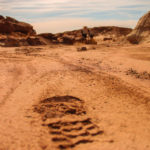
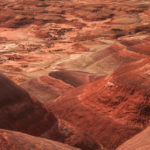
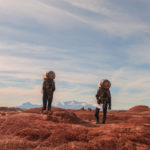
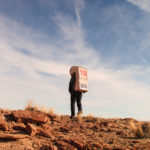
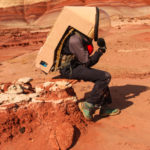
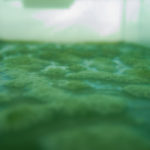
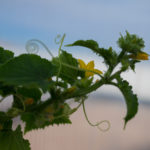
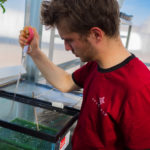
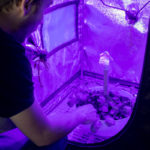
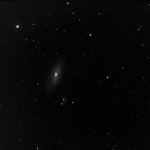
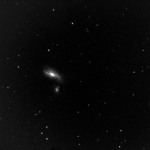

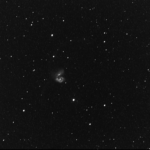
You must be logged in to post a comment.